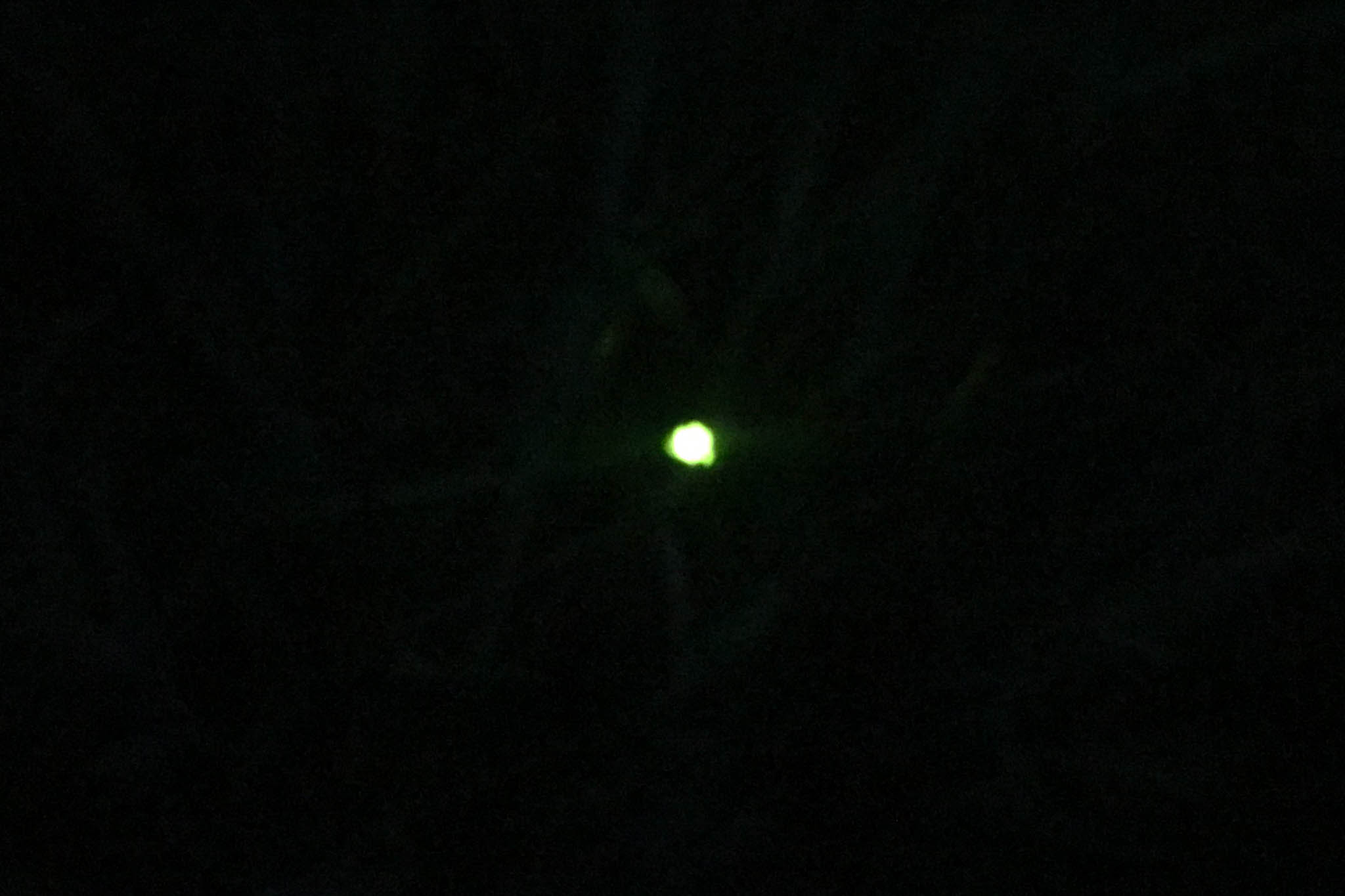Day 2 of a three day Summer Tour. It was a bit cloudier than yesterday, though it did brighten up a bit more again in the afternoon, and a cool easterly breeze picked up around the middle of the day, which was not in the forecast. We spent the morning in The Broads and worked our way back in the afternoon.
Our destination for the morning was Hickling. As we got out of the minibus, a Willow Warbler was singing behind the car park. As we walked down the track, a male Blackcap flew up into a tree ahead of us. We couldn’t see any sign of the Glossy Ibis on the first section of Brendan’s Marsh from the corner – just an Egyptian Goose, a few Avocets and Little Egrets. So we walked on down the path to Stubb Mill.
There was a lot of insect activity around the brambles along the side of the track, so we stopped several times to see what we could find. There were plenty of Small Tortoiseshell butterflies nectaring on the bramble flowers and a Painted Lady with them further down. There were lots of blue damselflies in the vegetation too – Blue-tailed, Common Blue, Azure and one or two Variable Damselflies. They were very skittish at first but we eventually got better views of a Variable Damselfly settled on a leaf.
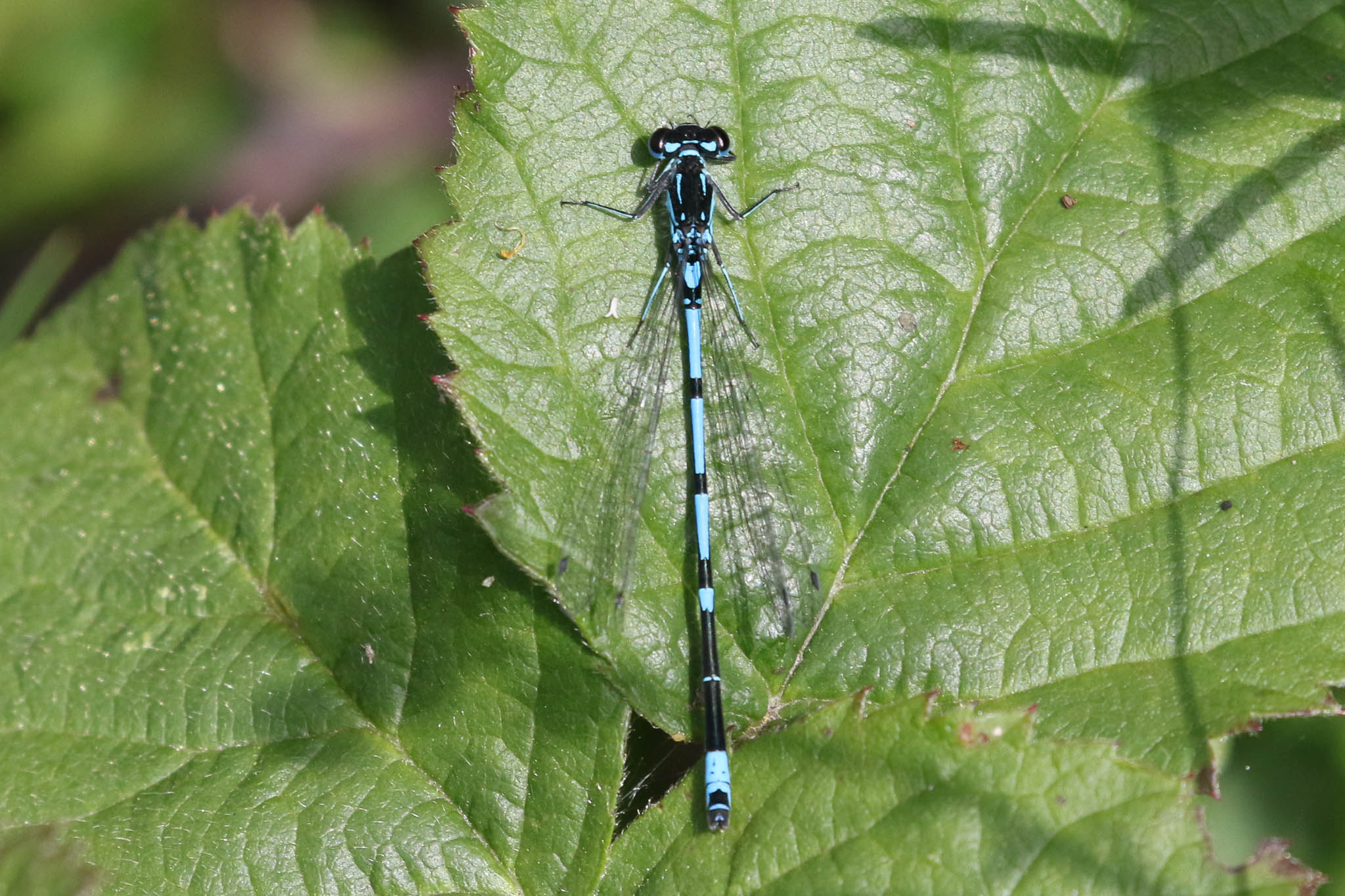
We took it in turns to climb up to the first viewing platform. There were quite a few Black-tailed Godwits, feeding and loafing on the islands. A Greenshank at the back was a more unusual sighting for this time of year – still waiting to head north or on its way back south already? It is always hard to tell with waders in mid-June! A small group of six ‘Tundra’ Ringed Plover should also similarly be northbound. We could also hear a Little Ringed Plover calling, and eventually found one on one of the bigger sandbanks in the flowers.
Over the back, out in the reedbed, we could see eight Spoonbills perched in one of the dead trees. We had a better view from the second platform, where we got them in the scope. One Spoonbill flew in, circled round and dropped down on the marsh where it started feeding, sweeping its bill side to side in the shallow water.

From up on the top of the bank at the far end, we stood and scanned reedbed. There were a good number of Marsh Harriers up now, and a distant Hobby, but no sign of any Bitterns or Cranes today, or the Glossy Ibis from here. A brief Swallowtail butterfly whipped across over the reeds but disappeared out of view before everyone could see it.
As we walked back, we finally located the Glossy Ibis which had now reappeared on the first section of Brendan’s Marsh. We could see it from the start of the Stubb Mill track, but we had a better view from the viewing mound along the Whiteslea track. We got it in the scope, and watched it feeding along the edge of the reeds and then walking out over the sandbank at the back. A smart Grey Heron was stalking the shallows right in front.
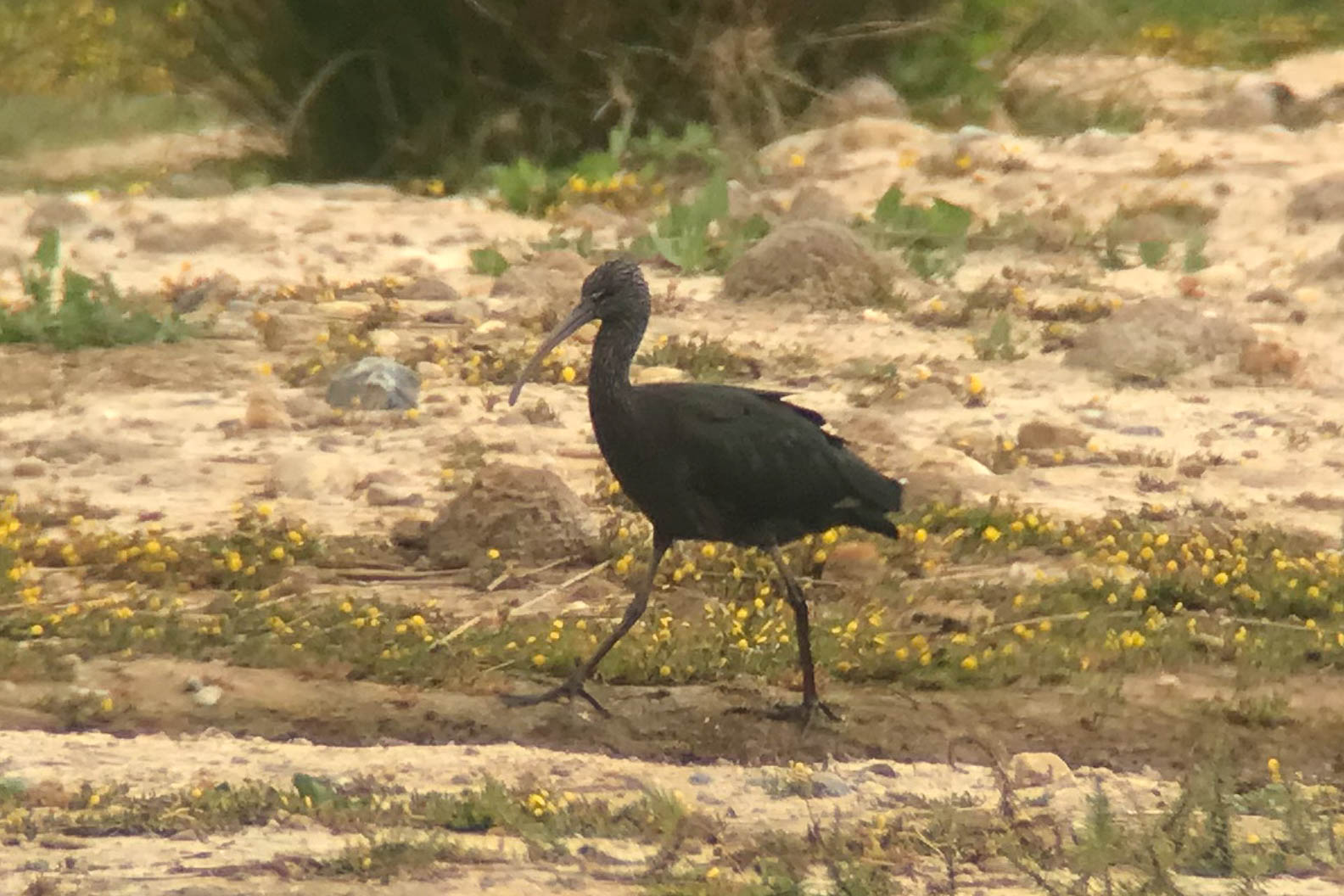
Another Swallowtail flew in over the reeds and looked like it might drop onto the brambles in front of us, but continued on over the gate. It landed on the top of a marsh thistle briefly, but then flew off again. It turned and came back in, and this time it did land in the brambles briefly before flying away over the reeds.
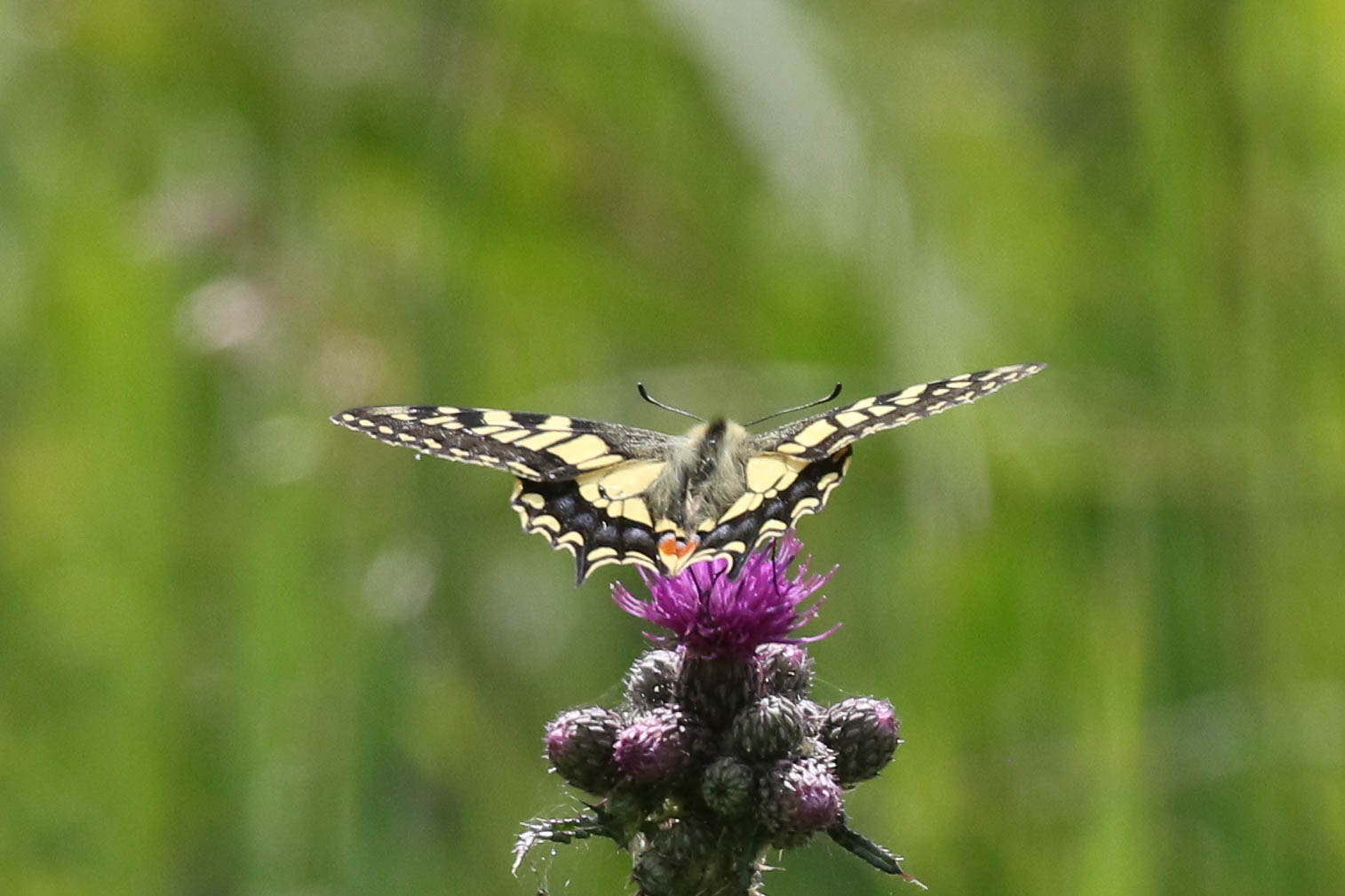
We walked on up towards Bittern Hide, scanning the reeds to see if we could spot one of its namesake but there was surprisingly little Bittern activity this morning. We did stop to admire three Six-spot Burnet moths feeding on the marsh thistles, and there were a few dragonflies around the reeds, including Norfolk Hawkers and our first Black-tailed Skimmers of the trip. We found a few caterpillars too, several Peacock butterfly caterpillars on the nettles and a couple of very hairy Garden Tiger moth caterpillars.
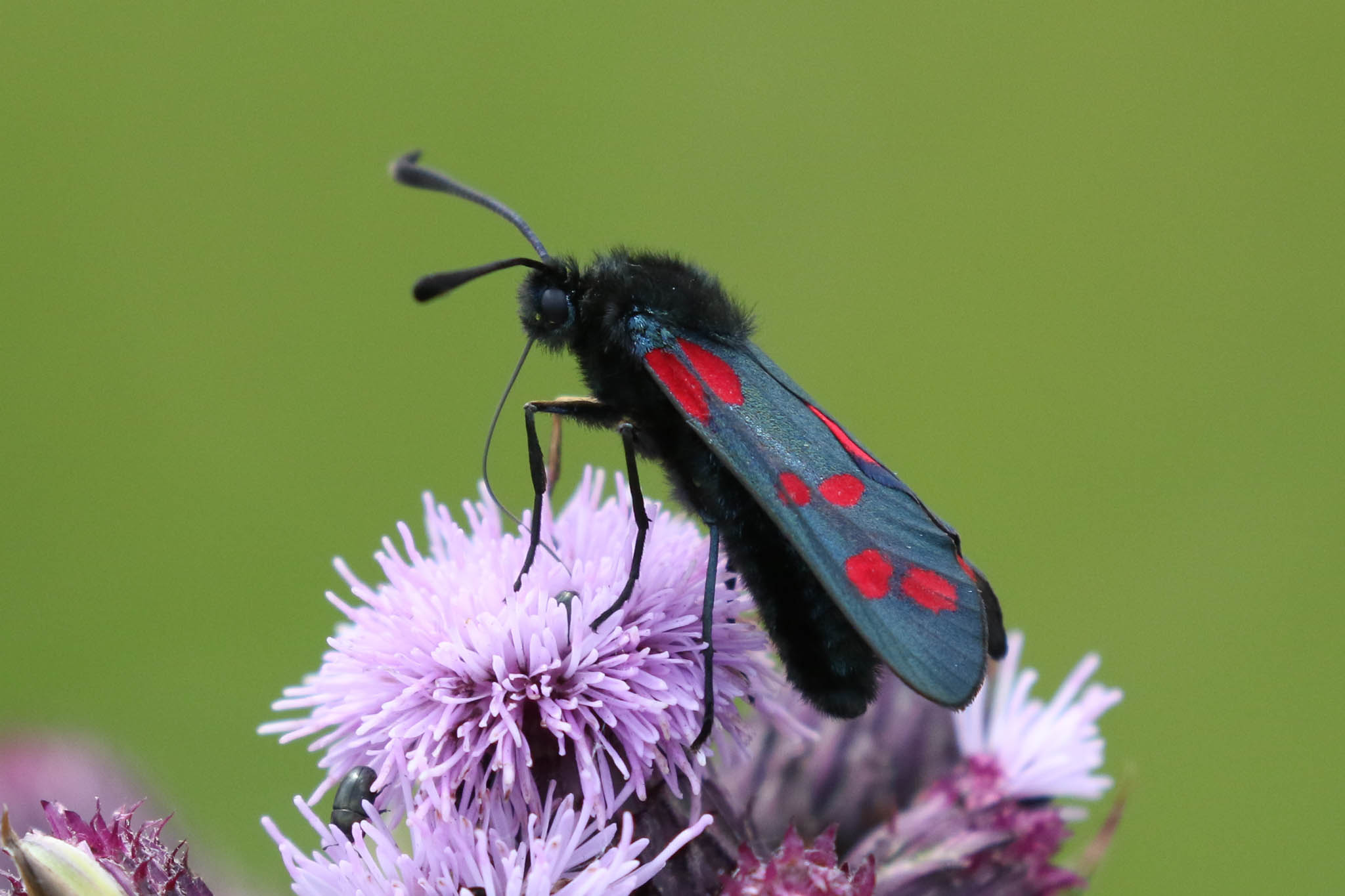
The wind had picked up, not the best for Bearded Tits, but we did see a male perched up briefly and, further up, a couple more flew across over the reeds and dropped in. One of the group who had walked on ahead saw a Common Crane fly low over the reeds, and apparently it had dropped down towards the back of the Bittern Hide pool.
We went into the hide to see if we could see anything, but there were just a couple of Little Egrets here. We did see a single Common Crane in the distance, back towards Stubb Mill, flying off over the wood. A male Bearded Tit flew across carrying some food in its bill and a Common Tern flew over.
Tummies were rumbling, so it was time to head back for lunch. On the way, as we cut across on the path through the wood back to the visitor centre, we did add a Large Skipper to the butterfly list and a Ruddy Darter to the dragonfly list, both on the brambles. We had lunch in the picnic area in the sunshine, where a Willow Warbler serenaded us from the trees.

With the wind having picked up significantly now, which was not in the forecast, we decided against walking round the other side of the reserve after lunch. So we got back in the minibus and drove round to Trimingham in NE Norfolk. Four Bee-eaters had been found here on a rainy 5th June, and it turned out that they were prospecting a potential nesting site in a nearby quarry. Fast forward a little over a week and the RSPB were setting up a car park and watchpoint so people could come and see them.
There were already several other cars in the field when we arrived and a small group of people over by the edge of the quarry, in the viewing area. There have been up to 7 Bee-eaters here, but just a pair were here now, the others having flown off along the coast to feed. We watched them perched on some nearby wires, flying round occasionally, catching bees. After a while, they dropped down into the quarry – one went into a small hole on the bank, excavating, while the other perched nearby. After a few minutes digging work, they both flew back up to the wires.

Having watched the Bee-eaters for a while, we decided to move on. As we walked back through the field towards the minibus, we stopped to look at the orchids in the parking area, Common Spotted Orchids and a number of hybrids.
Our next stop was up on the Heath. As we walked out, it was rather quiet – it was a bit sunnier now and the mid-afternoon lull. We found a male Stonechat singing, and another pair further over, and several Linnets. A male Yellowhammer perched up on the gorse briefly.
Walking round, we heard a buzzing call and looked across to see a Dartford Warbler flitting around low in the heather. It flew up onto the top of a large gorse bush, where it perched in full view, looking round. A bright male, we had a good view of it here. Then it flew again, across and into the top of another gorse bush further over where it sang briefly. Then it dropped down out of view. We walked round to where it appeared to have dropped but it had gone quiet and there was no further sign.

We did find a July Belle moth in the heather here, and a single male Silver-studded Blue butterfly, our first of the year. It was time to make our way back, but on our way we checked out another area for Silver-studded Blue and here we found several more males and a female.

We had to get back in good time today, as we would be heading out again later.
Nightjar Evening
We met again in the evening, after a rest and something to eat. It was still a bit early for Nightjars, so we headed down towards the coast first. On our way, we noticed a shape on the roof of an old barn, silhouetted against the sky, a Little Owl thinking about heading out for the evening. We pulled up nearby and had a great view of it using the minibus as a hide.
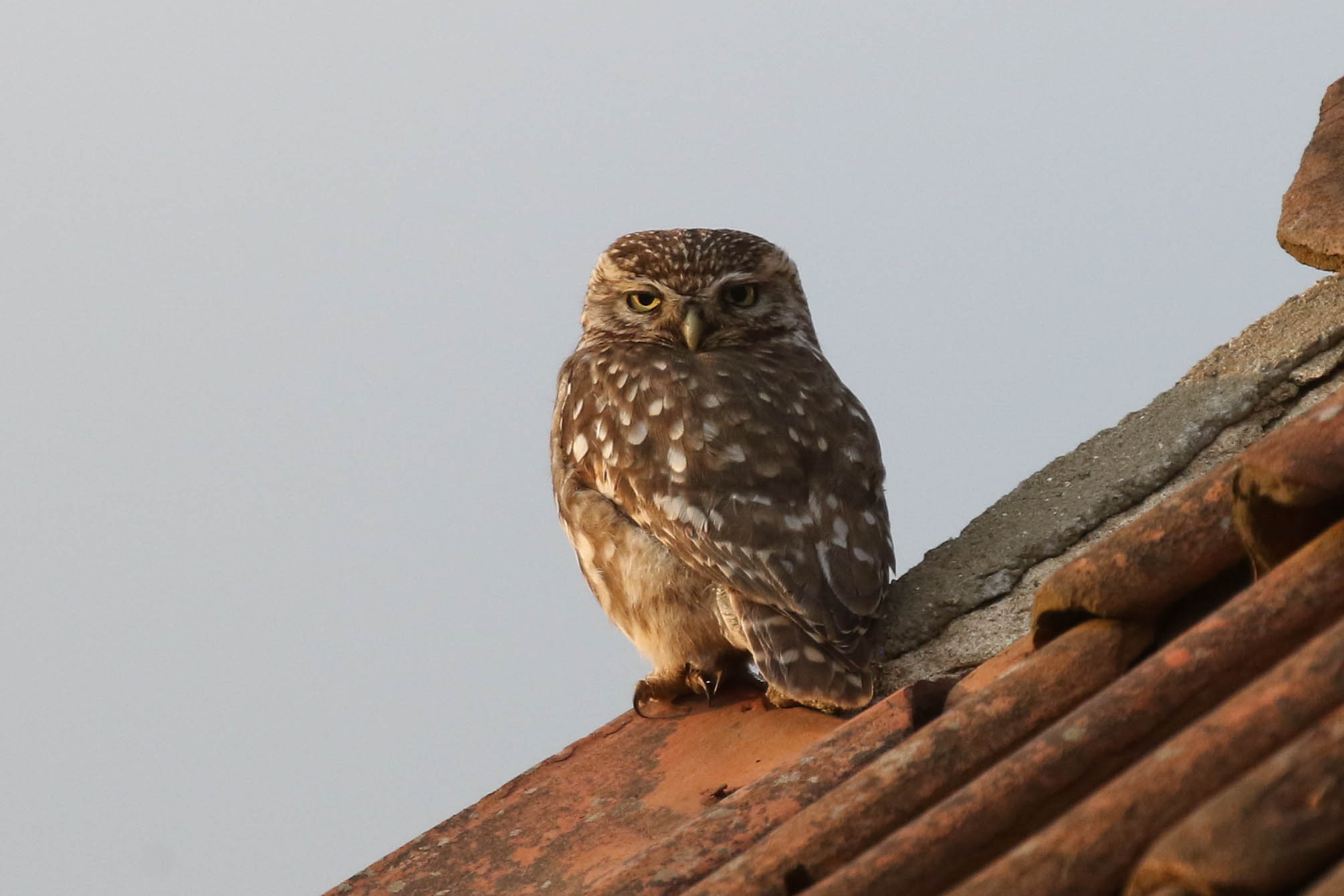
This is a regular spot for Little Owls, and a pair has lived here for as long as we can remember. But unfortunately this complex of barns is in the process of being converted into houses (presumably more second homes or holiday lets!), so the Little Owls will be out of a home soon. The barns at the back have already had their roofs stripped.
We had a quick drive round to see if we could find any Barn Owls, but they have been a bit thin on the ground this year. It was rather cool down towards the coast, with a fresh breeze, too. We had seen one yesterday, so we didn’t spend too much time looking. We drove along the coast road to Salthouse, where there had been a Quail singing earlier in the evening, but that had gone quiet too. So, as the sun was already setting, burning orange across the marshes, we decided to head up to one of the heaths.
We were not even in position, when the first Nightjar started churring, early tonight. A second then started up in the trees nearby. We were listening to that when we heard the first Nightjar call and looked over to see two males chasing each other round gorse bushes, flashing the white patches in their wings and tails. A Woodcock flew overhead, roding.
The two male Nightjars chased each other round and round the same repeatedly, calling and wing clapping. One flew up and landed in a lone oak tree above our heads briefly, but didn’t settle and flew off again. The other Nightjar flew a bit further away and landed on the edge of the heath in the trees that side where it started churring. We walked up to see if we could find it, but it was very dark along this edge and we couldn’t pick it out before it flew again.
The Nightjars resumed chasing each other again now, and then came in to investigate, circling round low just above our heads. Great views!
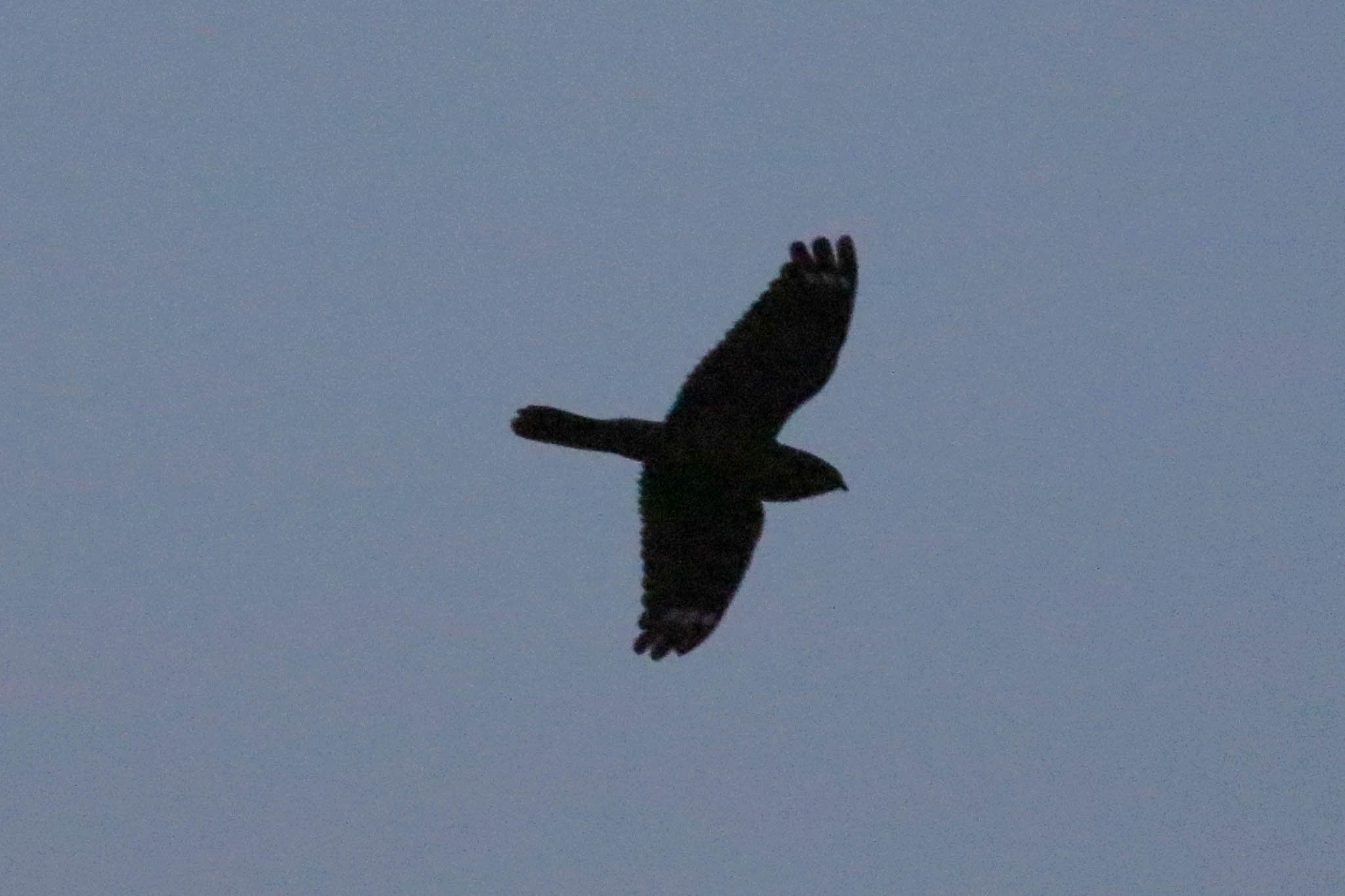
Having enjoyed stunning flight views of the Nightjars, we decided to call it a night before it got too dark. But as we started to walk back, we heard a Nightjar churring ahead of us and picked it up perched on a dead branch in the top of the trees, against the last of the light in the night sky. Now we could get the scope on it and see it churring.
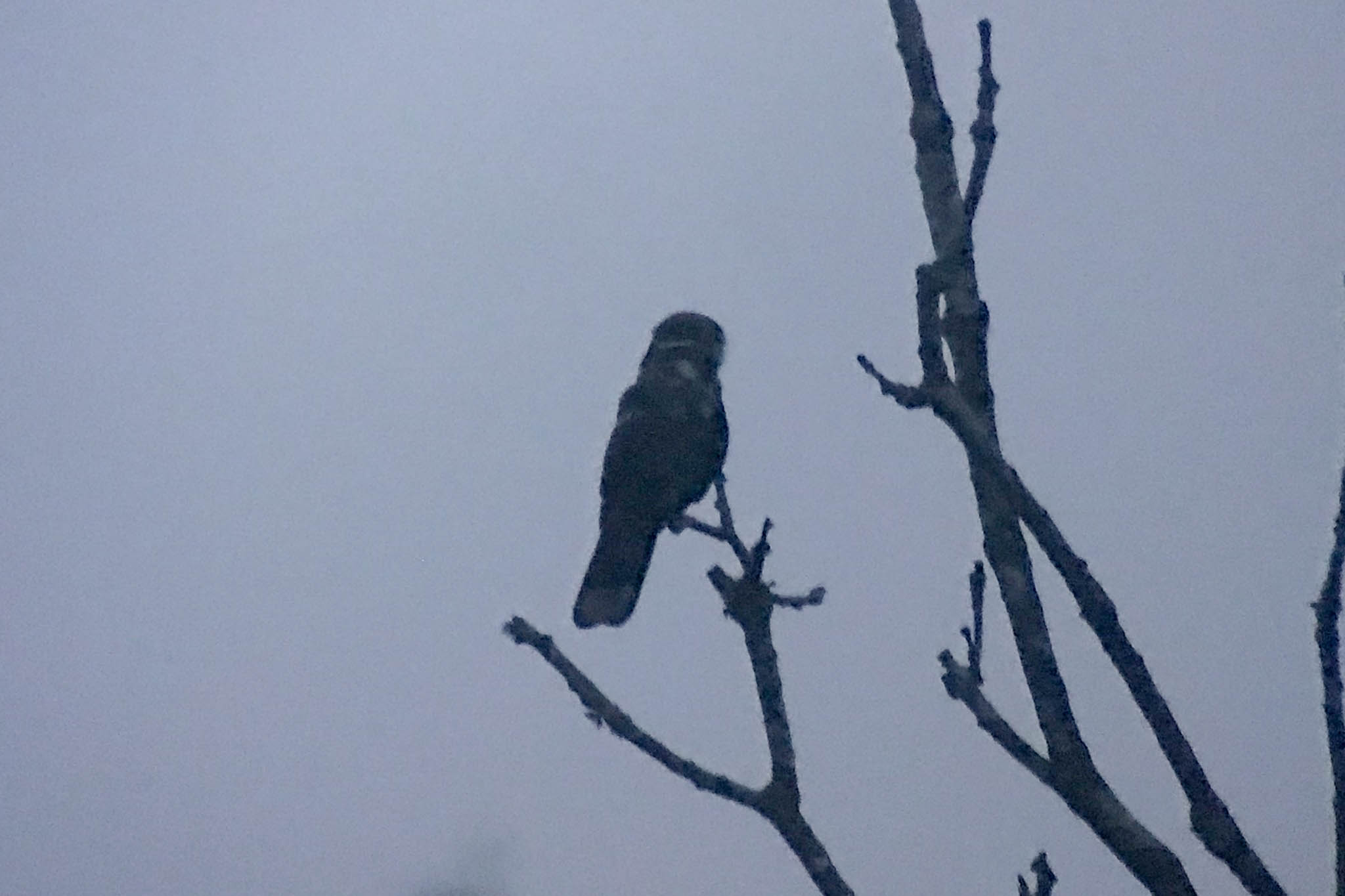
When the Nightjar eventually flew off, we resumed our walk back. But there was one more surprise in store – as we came off the heath, we noticed a small light glowing in the grass at our feet, a Glow-worm. A nice way to round off the night, and we had an early start again tomorrow, so it was time for bed.
